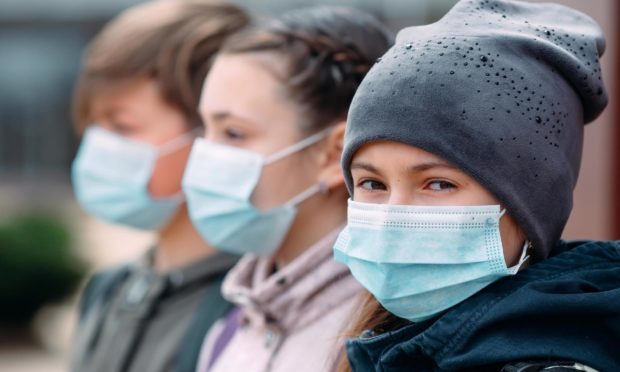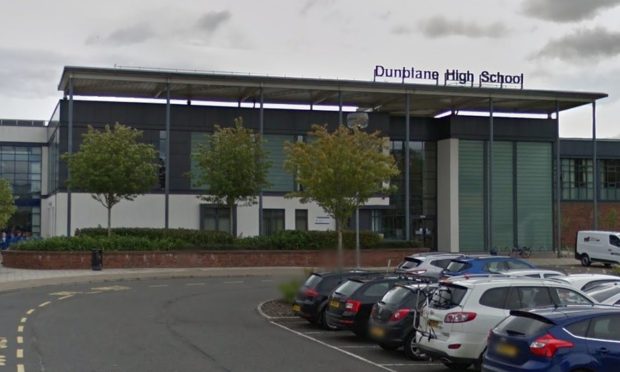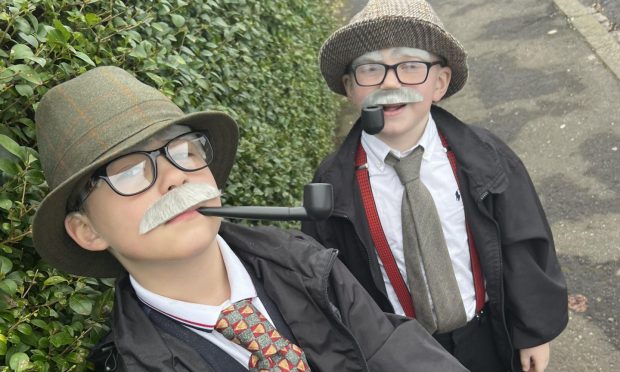As winter approaches and the threat of Covid-19 remains, ensuring pupils and teachers are warm but safe in lessons will become a balancing act for schools.
While temperatures drop windows and doors will need to remain open to ventilate classrooms and reduce the risk of airborne transmission of coronavirus, as set out in guidelines for keeping schools open safely.
Parents worried about children feeling the chill in class have already been advised by many schools to ensure they bring a warm sweater or layer up under their uniform and that jackets may be allowed when it’s particularly cold.
Councils have also been instructed by the government to work with schools to ensure they can meet the need for fresh air while maintaining adequate temperatures.
Why is ventilation needed?
The Scottish Government’s guidance for schools was updated in October to take account of the forthcoming colder weather.
Scientific advice, it states, is that ventilation is important in mitigating against the risk of what is known as far field aerosol transmission.
The guidance says: “There is therefore a need for an appropriate supply of fresh air to assist with minimising the risk of virus infection. There is also a need to maintain indoor temperatures for reasons including user comfort, health and wellbeing, and learning and teaching.”
What temperature and how much fresh air?
Classrooms must be kept at a minimum temperature of 17 degrees Celsius, with two air changes per hour.
As well as temperatures outside dropping over the winter average, wind speeds are expected to rise by 30% to 40%, increasing the need to stop draughts but also, possibly, aiding quicker ventilation.
The best method of achieving natural ventilation, the guidance says, remains opening external doors, vents and windows.
Acknowledging schools will be unable to keep doors and windows open as much during colder weather, it states schools should be “supported to adopt strategies that help balance requirements for ventilation with internal temperatures and conditions”.
It also suggests seating plans could be devised allowing pupils more sensitive to the cold to sit further away from open doors and windows and advocates use of fan heaters where the balance of ventilation and temperature cannot be struck.
What have schools said?
Monifieth High School adapted its school uniform policy to allow pupils to wear blue hoodies, and head teacher M-C McInally reminded parents to ensure youngsters had warm coats to wear over them.
At Harris Academy, in Dundee, the heating will be turned up as doors and high-level windows remain open, and pupils will be allowed to wear extra layers and jumpers in class where appropriate.
In a letter to parents head teacher Barry Millar said: “During the winter months, a fine balance between room temperature and the necessity of fresh air will be a constant focus for us.”
An update for parents from Kinross High School said doors and windows would be kept open where possible.
It said: “This means classrooms will be cooler and pupils should dress appropriately for the building conditions.
We cannot emphasise the importance of dressing in warm clothing strongly enough.”
Kinross High School
“We cannot emphasise the importance of dressing in warm clothing strongly enough.”
Lisa Moore, head teacher of Viewforth High School, Kirkcaldy, told parents: “As the weather gets colder, young people should bring a black jumper or black cardigan to school to wear on top of their school shirt or wear a t-shirt under their school shirt; the jumpers and cardigans should conform to the school uniform policy.
“On occasion staff may allow pupils to wear their outdoor jacket in the classroom if it’s particularly cold.”
Tulliallan Primary School also reminded parents to ensure kids are dressed warmly.
It Tweeted: “Just a reminder that as the weather gets a bit colder please send your child with extra layers as we must have the windows open for ventilation!”
Just a reminder that as the weather gets a bit colder please send your child with extra layers as we must have the windows open for ventilation!
— Tulliallan Primary School and Nursery (@TulliallanPS) November 5, 2020
What are local councils doing?
Dundee
A Dundee City Council spokesman said: “The council has been looking at each individual school to establish measures that are needed to comply with the national guidance.
“We are continually monitoring the situation.
“The council is discussing this with trade unions and schools have been keeping families informed.”
Angus
An Angus Council spokesman said: “Our priority remains, as ever, the safety and wellbeing of our school communities.
“As such, we have risk assessed all mechanical and natural ventilation system to develop ventilation guidance for our schools in accordance with Scottish Government guidance.
“Heating times have been extended and, where necessary, mechanical systems have been adjusted.
Heating times have been extended and, where necessary, mechanical systems have been adjusted.”
“Our bespoke guidance includes information specific to colder weather and how to best balance the requirements of maintaining a comfortable heat within buildings and ensuring good ventilation.
“It includes a request to dress accordingly for maybe lower than normal indoor temperatures.
“There will be ongoing monitoring of the situation and continuous engagement with each school to ensure that should any issues arise they will be quickly and appropriately dealt with.”
Perth and Kinross
A Perth and Kinross Council spokeswoman said: “We are working with schools to provide guidance and support to deliver the most effective ways to maintain adequate heating and ventilation for staff and pupils depending on the individual circumstances of each school.
“Meetings are scheduled with all primary and secondary schools to provide an overview on the heating and ventilation strategies in operation to support the right balance of heating and ventilation in the current circumstances.
“Our strategy includes the need for individuals to wear warm clothes in the school environment if necessary.”
Fife
Fife Council said it is working with schools to strike a balance between ventilation and room temperature to keep pupils and staff safe and comfortable.
Head of education and children’s services Shelagh McLean said: “As the weather becomes colder warmer clothing will be needed and there will be flexibility within schools for pupils and staff to wear what’s appropriate for the temperature.
“The situation will be carefully monitored over the coming months as we continue to follow public health guidance, and we’ll work with schools individually on any specific issues.”










